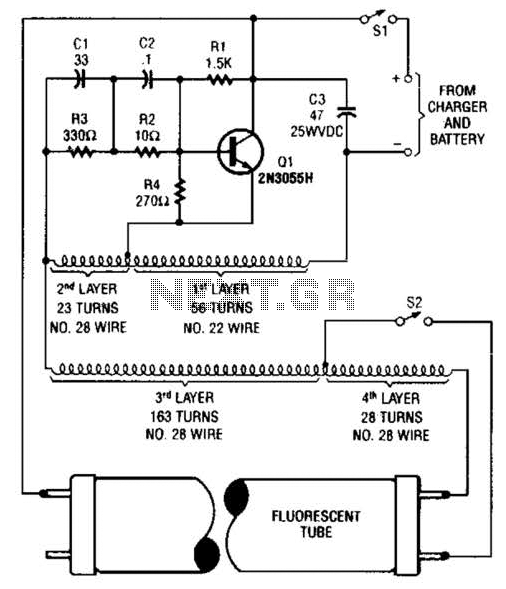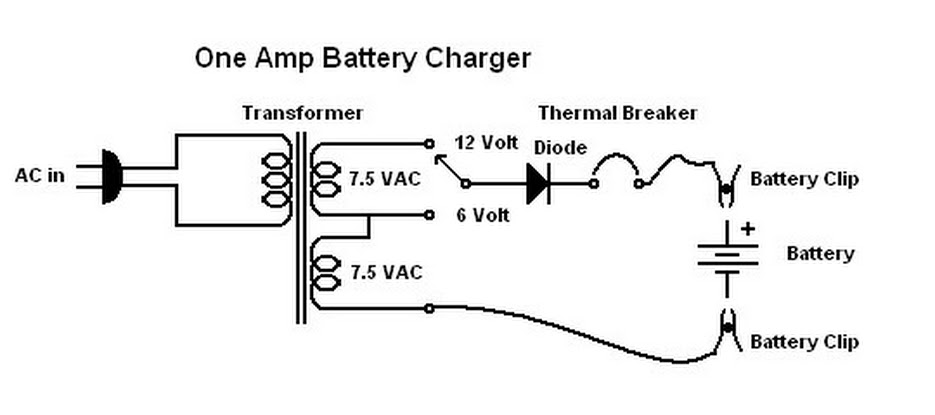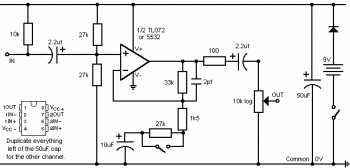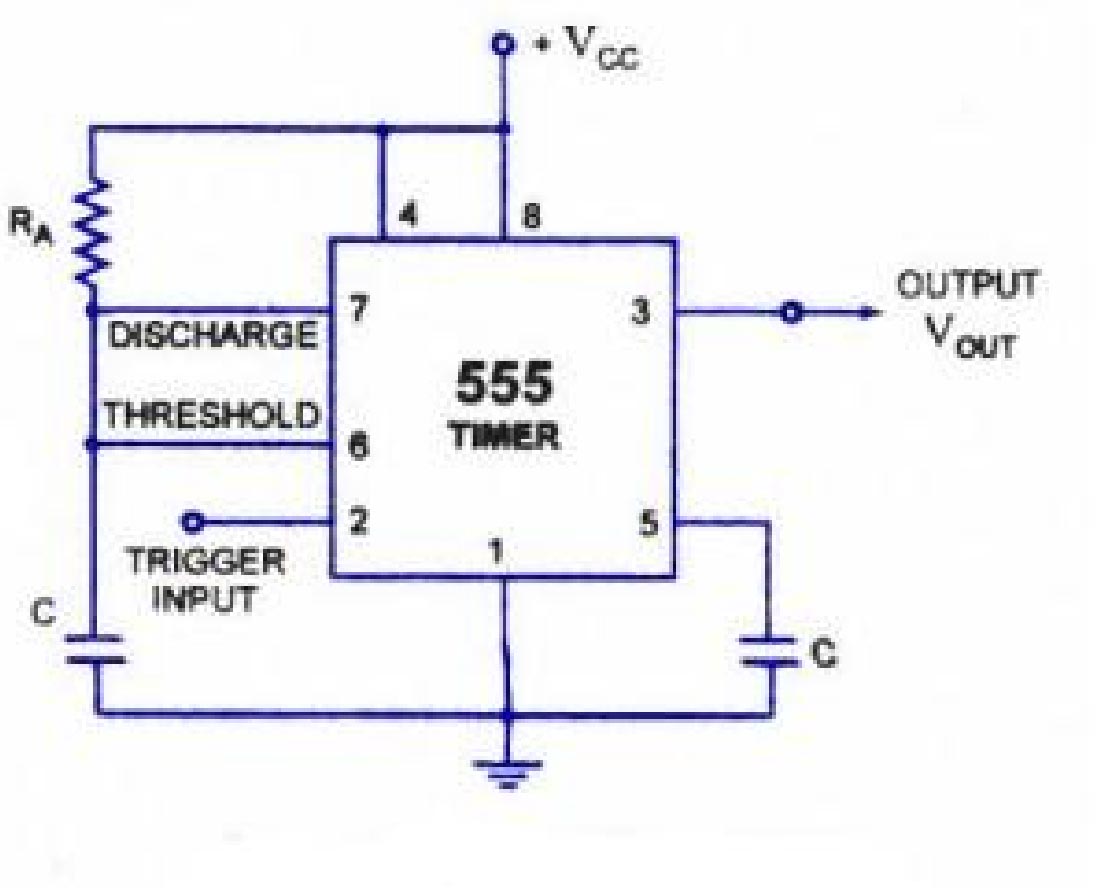
100 watt simple mosfet power amp
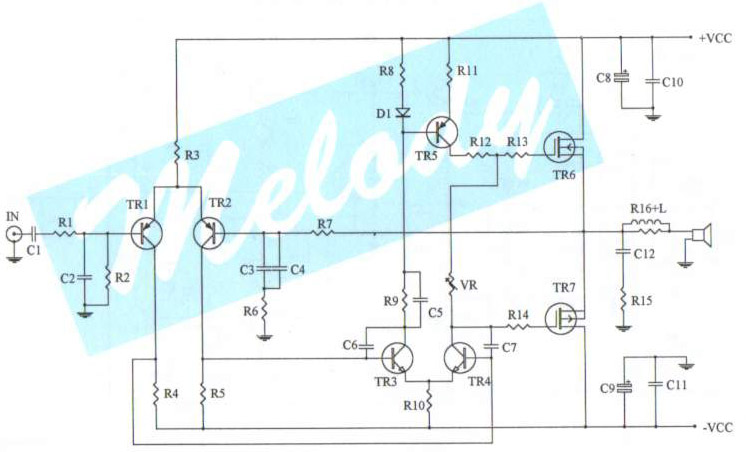
The schematic diagram of a 100-watt audio amplifier utilizing MOSFET technology. A comprehensive collection of electronic circuit diagrams is available, including a 100W RMS amplifier and a 0-30V stabilized variable power supply with current control.
The 100-watt audio amplifier schematic employs MOSFETs (Metal-Oxide-Semiconductor Field-Effect Transistors) to achieve high efficiency and low distortion in audio amplification. The circuit typically consists of input stages, driver stages, and output stages, with each stage designed to handle specific functions in the amplification process.
The input stage often includes a differential amplifier configuration to ensure high input impedance and low noise. This stage may utilize operational amplifiers or discrete transistor configurations to amplify the audio signal while maintaining fidelity.
The driver stage is responsible for providing the necessary gain and driving capability to the output stage. In MOSFET amplifiers, this may involve a complementary push-pull configuration, which enhances efficiency and reduces heat generation. The driver stage may also include feedback mechanisms to stabilize gain and minimize distortion.
The output stage, which is the core of the amplifier, consists of MOSFETs configured to handle the high power levels required for audio output. The use of MOSFETs allows for rapid switching and improved thermal management, leading to reliable performance under varying load conditions. The output stage is typically coupled with output transformers or inductors to match the impedance of the speakers and optimize power transfer.
Additionally, the schematic may feature a power supply section that provides the necessary voltage and current for the amplifier's operation. The 0-30V stabilized variable power supply with current control is essential for ensuring consistent performance across different operating conditions. This power supply circuit may incorporate voltage regulators, capacitors for filtering, and current sensing components to maintain stability and protect the amplifier from overload conditions.
Overall, the design of a 100-watt audio amplifier with MOSFETs requires careful consideration of each stage to ensure high performance, reliability, and sound quality. The integration of a variable power supply further enhances the versatility of the amplifier, making it suitable for a range of audio applications.The schematic diagram of 100 watt audio amplifier with MOSFET. The huge collection of electronic circuit diagrams are provided here 100W RMS Amplifier · 0-30V Stabilized Variable Power Supply with Current Control 🔗 External reference
The 100-watt audio amplifier schematic employs MOSFETs (Metal-Oxide-Semiconductor Field-Effect Transistors) to achieve high efficiency and low distortion in audio amplification. The circuit typically consists of input stages, driver stages, and output stages, with each stage designed to handle specific functions in the amplification process.
The input stage often includes a differential amplifier configuration to ensure high input impedance and low noise. This stage may utilize operational amplifiers or discrete transistor configurations to amplify the audio signal while maintaining fidelity.
The driver stage is responsible for providing the necessary gain and driving capability to the output stage. In MOSFET amplifiers, this may involve a complementary push-pull configuration, which enhances efficiency and reduces heat generation. The driver stage may also include feedback mechanisms to stabilize gain and minimize distortion.
The output stage, which is the core of the amplifier, consists of MOSFETs configured to handle the high power levels required for audio output. The use of MOSFETs allows for rapid switching and improved thermal management, leading to reliable performance under varying load conditions. The output stage is typically coupled with output transformers or inductors to match the impedance of the speakers and optimize power transfer.
Additionally, the schematic may feature a power supply section that provides the necessary voltage and current for the amplifier's operation. The 0-30V stabilized variable power supply with current control is essential for ensuring consistent performance across different operating conditions. This power supply circuit may incorporate voltage regulators, capacitors for filtering, and current sensing components to maintain stability and protect the amplifier from overload conditions.
Overall, the design of a 100-watt audio amplifier with MOSFETs requires careful consideration of each stage to ensure high performance, reliability, and sound quality. The integration of a variable power supply further enhances the versatility of the amplifier, making it suitable for a range of audio applications.The schematic diagram of 100 watt audio amplifier with MOSFET. The huge collection of electronic circuit diagrams are provided here 100W RMS Amplifier · 0-30V Stabilized Variable Power Supply with Current Control 🔗 External reference
